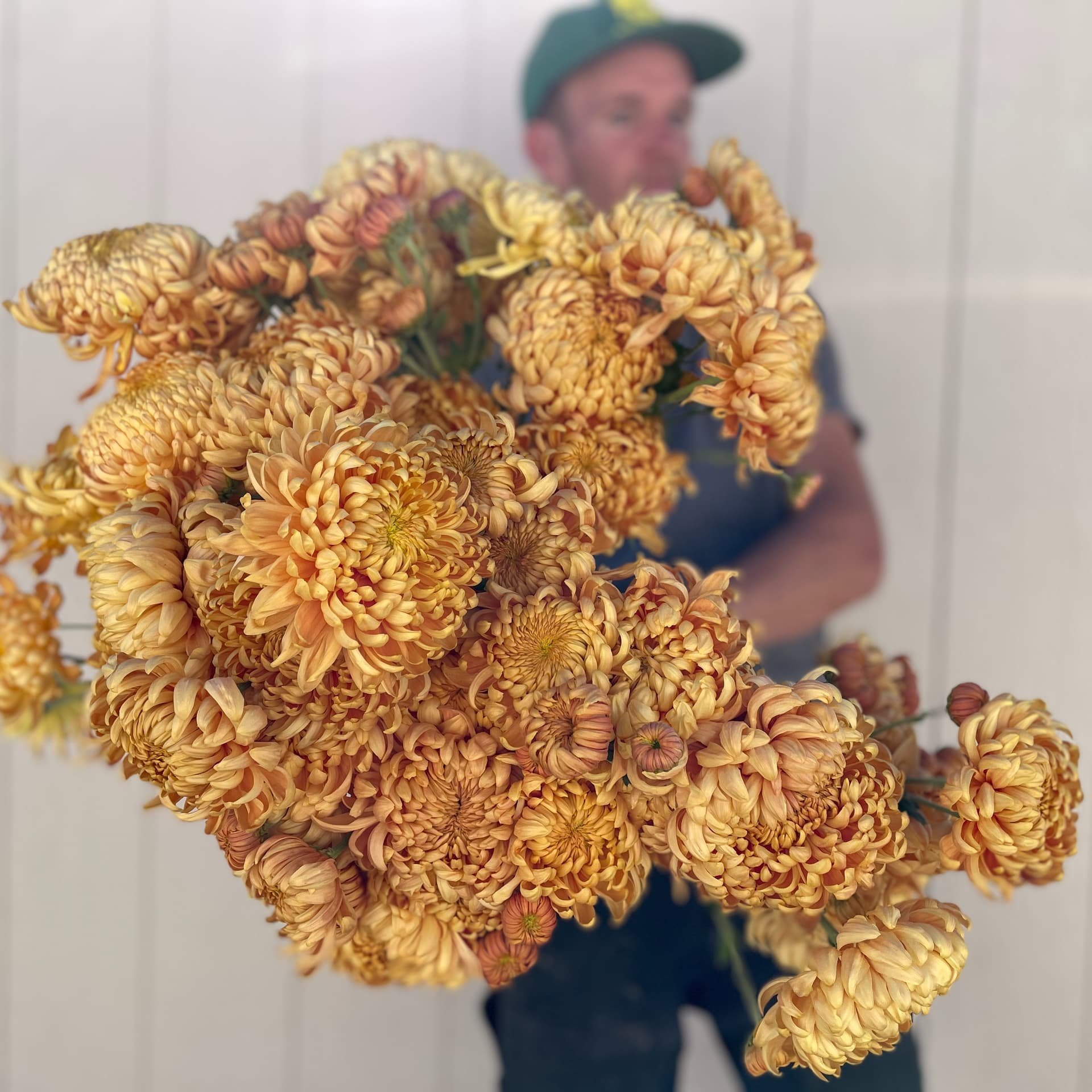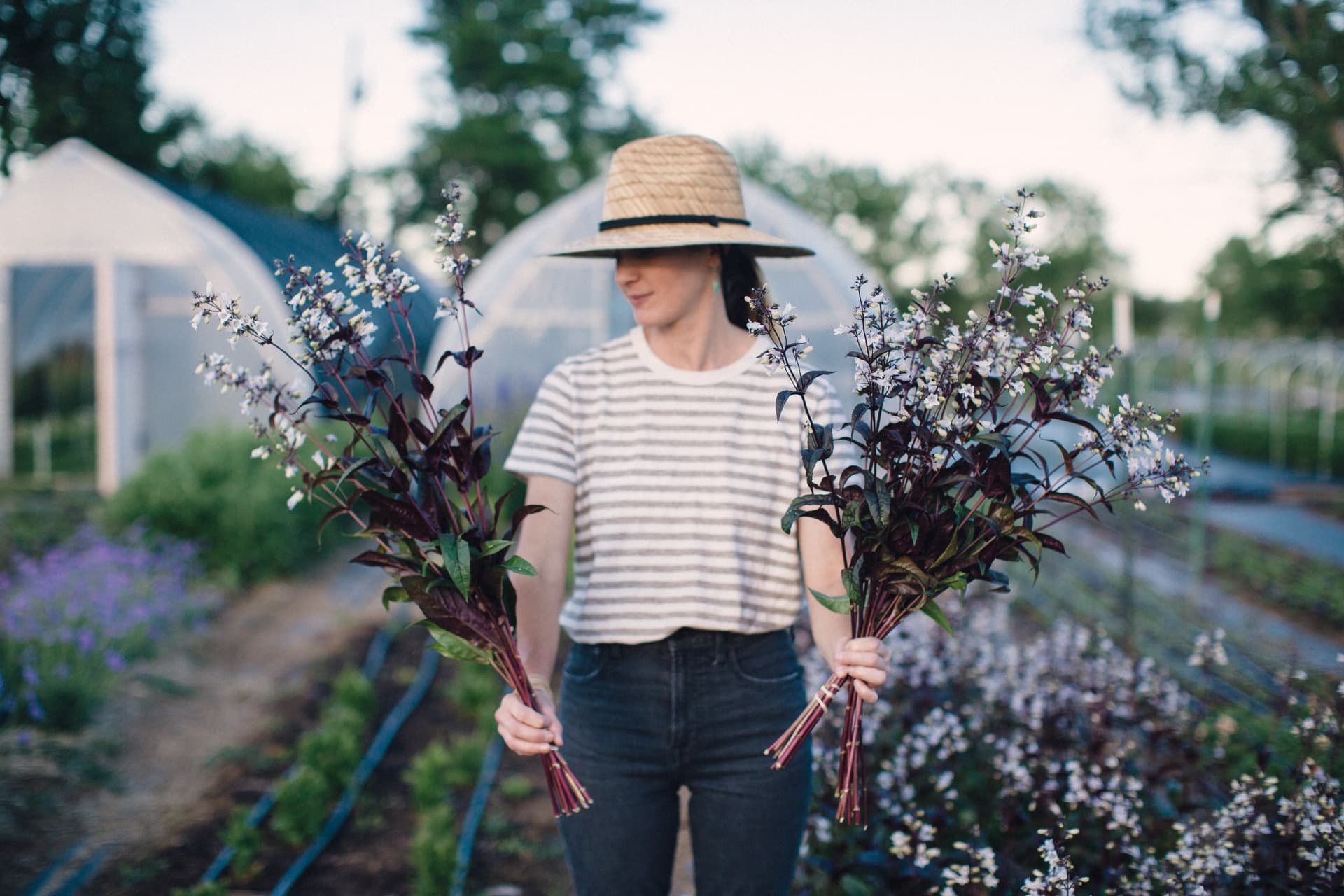Business Model Highlight: Native Perennials and Season Extension
In this Team Flower Business Model Highlight, we're featuring Little Hollow Flowers, a family-owned and operated farm specializing in growing seasonal and sustainable cut flowers. Little Hollow Flowers can be found online at www.littlehollowflowers.com or on social media @littlehollowflowers.
Little Hollow Flowers is a family-owned and operated farm specializing in growing seasonal and sustainable cut flowers. Located in Berthoud, Colorado, our 5-acre farm hosts a variety of annuals, perennials, woody shrubs, and fruit trees. We are proud to supply our region with locally grown flowers, and we are equally focused on the quality of our products and the impact of our practices.
We are endlessly captivated by the beauty and diversity found in landscapes throughout the West, and our offerings will continue to expand in the coming years to reflect the sense of place we find so unique to our region. Inspired by and mindful of our Colorado climate and plant communities, we are passionate about bringing more resilient, water-wise plant selections into the cut flower market.
Litlle Hollow Flowers WORKS directly with florists through THEIR online shop or via two different local flower collectives.
Who Do You Serve?
We work primarily with florists in Denver, Boulder, Fort Collins, and surrounding areas. Probably 80% of our sales are directly to florists through our online shop or two different local flower collectives. We also offer flowers on Saturdays at the Colorado Fresh farmers market in Denver. The mix of wholesale and farmer's markets has been a great combination for us to serve a larger portion of our local community. We have also branched out with other avenues, including floral design for weddings and events, pop-ups at retail locations, and education and coaching for new growers. Currently, we are opting to stay focused on quality and consistency for our products, trialing new varieties, and scaling up our offerings for our wholesale and farmers market customers.
What Are Your Most Popular Products?
It totally depends on the season. In spring, we start with a curated selection of anemones, ranunculus, and double-flowering tulips. These are popular with both wedding florists and farmers market customers—so many good color options and long vase life! The transition between spring and summer is among our favorite moments of the season. Perennials come into focus, presenting some of our most unique and diverse blooms of the year. Farm favorites are apache plume, baptisia, clematis, delphinium, echinacea, echinops, eremurus, penstemon scabiosa, and yarrow. Hardy annuals and perennials carry us through June and early July, and mid-July through October is our most productive season with a wide array of summer annuals. Lisianthus and dahlias are our most popular summer and fall flowers, and we give a lot of attention to selecting unique colors and varieties. With dahlias in particular, we are sourcing and collecting varieties that are not as widely available in the floral trade. We finish the growing season with a crop of heirloom chrysanthemums in November, which have quickly become a favorite.
They’re committed to providing work opportunities to support their team members' livelihood and professional growth.
Do you work with a team?
We feel incredibly grateful for our amazing team. Our growing and harvesting crew is so hard-working and passionate about plants, agriculture, and the environment. They came to us with degrees in Environmental Sustainability and Agro-Ecology and with previous experience farming, but not specifically with cut flowers. When you are new to growing cut flowers, there is quite a bit to learn about each flower variety: processing, conditioning, storing, ideal harvest stages, and more. They have been so diligent, detail-oriented, and quick to learn. They have also brought a wealth of knowledge, experience, and intellectual curiosity to our farm. We've had so many great conversations about water, soil, regenerative agriculture, sustainability in farming, etc. So yes, we couldn't do this without our amazing team, and they are an integral part of everything we do.
As business owners, we are committed to providing work opportunities to support our team members' livelihood and professional growth. We feel strongly about paying our employees at a competitive rate and are actively working towards better compensation as we grow. The cost of living is high in Colorado, and fair pay makes flower farming accessible to a broader group. For this reason, we are choosing to grow our business around trained, skilled staff rather than relying on volunteers or internships. Many of the decisions we make about what and how we grow, our sales outlets, and how we price our products are influenced by our commitment to fair compensation. We want to be passionate about our work and earn a livable wage while doing it.
What makes your business model unique in your area?
We feel fortunate to be part of a broader network of farms located along Colorado's Front Range. There are more than a dozen small farms growing cut flowers in our region, and together we supply more locally grown flowers to our region and reduce our reliance on flowers that are grown and shipped overseas. We love that each farm specializes in slightly different varieties depending on their land, their sales avenues, and their interests and strengths as growers.
One of the things that makes Little Hollow flowers stand out is their focus on season extension during the early and late periods.
One of the things that makes our farm stand out is our focus on season extension during the early and late periods. When we started our farm, we renovated an existing 1,800 sq. ft. heated greenhouse on site. We use this space to start most of our seeds for the year and to grow both an early spring crop and a late fall crop. Growing in the greenhouse allows us to offer ranunculus and anemones 4-6 weeks earlier than our field-grown ones and heirloom chrysanthemums long after frost. With Colorado's abundant sunshine and consistently high daytime temps in spring and fall, we are able to grow in the greenhouse with no lights and with minimal supplemented heat. We have also built a series of unheated high tunnels and caterpillar tunnels for spring bulbs and hardy annuals. These covered growing areas require some upfront investment and added labor—we cover each row with frost cloth in the evening and uncover each row the following morning throughout the winter and spring. We've found that the extra investment pays off for us, partly because we love spring flowers so much and partly due to supply and demand. Fewer farms focus on season extension, so it's a good opportunity to sell everything we can grow. An added bonus: these early and late season flowers are a really important food source for pollinators with far fewer options during the shoulder seasons.
Our focus on shrubs and perennials also sets us apart, which we'll describe in more detail. We continue to add more of these varieties each year to lean into more regionally well-adapted plants that may be less available in the floral trade.
What are you known for? Why and when do customers come to you?
People know us for growing reliable favorites like ranunculuses and dahlias while also offering lesser-known varieties to add something special to a design. We've worked hard to tailor our crop planning to provide more volume of in-demand varieties and colors while still leaving room to trial new things. We are passionate about trialing more natives and more perennials or shrubs. We love native plants, the benefits they offer, and celebrating what is special and unique to the land we cultivate. Nativeness in plant terms (for us) is less about what was here first and more about co-evolved relationships over time. This includes geology, soils, micro-organisms, habitat for insects and birds, cultural significance and use, and much more. We also love growing non-native plants, but we consider carefully which of those to introduce at Little Hollow. The top 3 things we look for are:
Well-adapted: Are they well-suited given our climate, soils, and available water?
Well-behaved: Are they potentially invasive or extremely poisonous (we have pets)?
Beneficial: There are so many ways in which plants can be beneficial, and we look for the ones that succeed on more than one level. Do they offer ecosystem benefits (food, habitat, nutrients for soil)? Do they fill a niche or a season that is currently lacking on the farm? Are they a contributing part of a viable business model for us? And, do we love them so much that we simply must grow them?
At little hollow flowers, they love native plants and the benefits they offer.
There is a whole host of native, well-adapted, or regionally relevant plants in Colorado that are not ubiquitous or widely available in the floral trade. In the coming years, our goal is to trial and establish a greater selection of perennials and woody shrubs that are specifically well-adapted to our region and have great potential in terms of their use in floral design. We believe in growing these plants from an ecological perspective but also from an aesthetic one. Floral design in our region is already taking cues from contextual landscapes, borrowing native and foraged material on-site to blur the lines between nature and design. We are excited to be part of cultivating an authentic regional style with unique or uncommon selections. The import markets are largely stocking flora from more temperate or tropical regions with nothing to do with Colorado. While we are not strictly against using these materials in design, we think it's exciting to be able to offer people something that echoes and celebrates their local expression of "nature."
What problem do you solve for your customers? How do you solve it?
One of the ways we've fine-tuned our approach to selling directly to florists has been by launching an online shop. We found it difficult to manage inventory and accurately display what varieties are currently available using a traditional availability list. The lack of a live inventory created issues with allocating what we had as the emails came in. We've worked to build out our online shop so that designers can shop directly from our website. Each variety has a photo, stem count, and price. Inventory is visible as you shop so designers can see exactly how many bunches of varieties are available. Our hope has been to minimize correspondence for everyone; as we all know, the floral industry is always short on time. Accurate photos help display and articulate some of the subjective qualities of flowers, such as color. The addition of our online shop has helped us better serve the designers we work with in a significant way.










